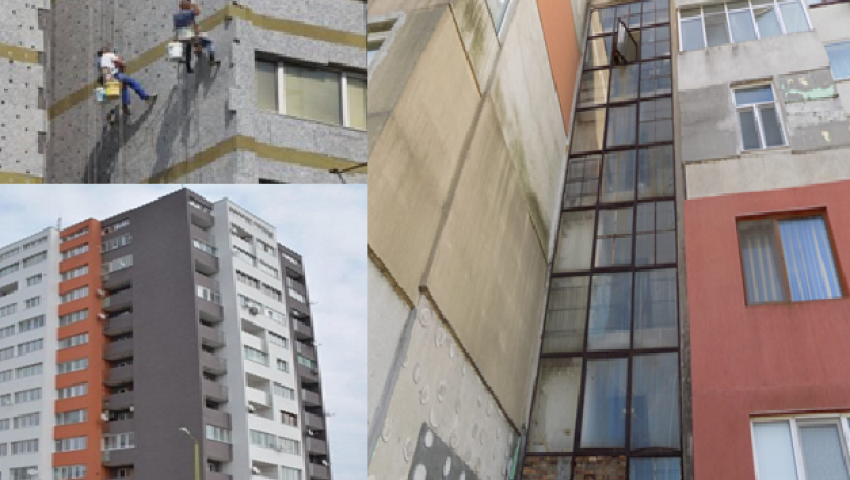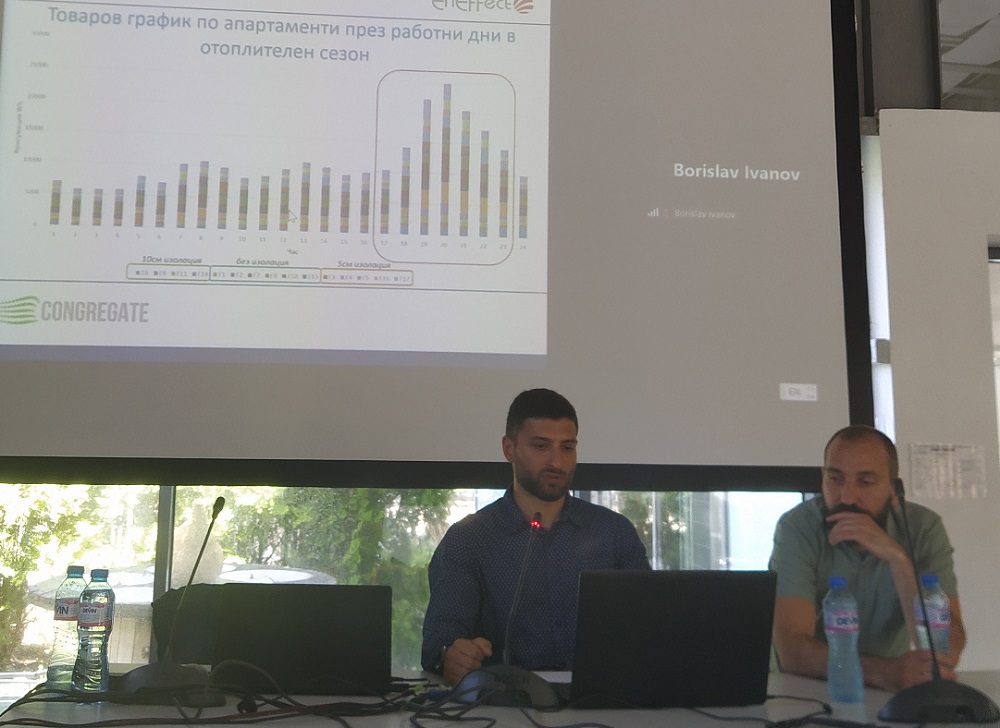Up to 50% more electricity is spent on uninsulated housing, monitoring of apartments in Gabrovo shows

Raya Lecheva
Up to 50% more energy for heating and electrical appliances in the home is spent by a home without insulation, up to 33% more energy is spent by a home with 5 cm of insulation compared to a home with 10 cm of insulation. This was announced by Borislav Ivanov, who presented the results of monitoring of 24 apartments in Gabrovo to the Center for Energy Efficiency EnEffect. This happened during a conference-exhibition in Burgas "Sustainable financing of energy efficiency and renewable energy projects", where 3eNews is a media partner.
Of these 24 apartments, 7 are 10 cm insulated, 10 are 5 cm insulated, and 7 are uninsulated. Energy monitors have been installed in each building, which have measured the results of the heating and transition period in April and May before the summer.
The highest indoor temperature is achieved in apartments with 10 cm - over 21 degrees, in apartments with 5 cm is 20 degrees, and in apartments without insulation are below the comfort limit with average temperatures of about 18.3 degrees Celsius.
Specialists have installed mother devices that connect to electrical switchboards and the Internet to measure electricity consumption and transmit it in real time to an online database. Smart socket connects to air conditioners and water heaters to measure the amount of energy at the main consumers. Special devices measure internal temperature, humidity and carbon dioxide. Accurate outdoor temperature data are also used.
The apartments are divided according to the heating system - air conditioners, central heating, with wood stoves and pellets. Monitoring data show that if 30-60% is normal humidity, the comfort of living in homes with wood and pellet heating deteriorates because the humidity is at the limit, especially in the cold months. The level of carbon dioxide was also measured in the homes, as the normal limits are 1000 per million particles or 1000 ppm, and above this norm a person begins to feel tired and drowsy. At 2500 ppm, these are more serious health effects.
The data show that the average values are above 1800 ppm in homes with central heating and 1500 ppm in homes with air conditioning. In the case of wood and pellet houses, it is 1000 ppm, which, however, is explained by the presence of a chimney, which provides natural ventilation, the analysis shows.
The measurement of carbon dioxide in the bedrooms shows that from 12 o'clock in the evening the concentrations increase to threatening levels, especially if there is no open window - and this is always the case during the winter months.
No matter what the dwellings are, from 5 pm to midnight, due to the fact that the whole family is at home, energy consumption is increasing, carbon dioxide levels are also rising. They are highest in the bedrooms at night, when without exception they reach 4 times above the maximum allowable levels, and this, in addition to giving a feeling of sleep deprivation, is very harmful to health. That is why it is important to constantly ventilate the home, experts advise.
Due to the problem of regulating the necessary comfort at home, experts comment that it is extremely important that the apartment has a ventilation system. Unfortunately, the bedroom may not be the right solution because most ventilation systems are noisier. Others suggest making the construction of ventilation systems mandatory. Their lack is currently a problem for kindergartens and schools, where children's comfort and conditions are a serious problem, experts say. The benefits are that the modern ventilation system determines how much new air to enter the room, and also does not allow it to cool excessively, as there is over 90% recovery of heat (recovery), said Alexander Stankov from EnEffect.
In short, experts advise: "Ventilate moderately, but often, or ventilate through special mechanical systems! Excessively humid air leads to the formation of microorganisms that are harmful to health.
In an unsanitary building, comfort decreases around glass and windows, which cool down the fastest. If the temperature of the window surface falls below 12 degrees, condensation and mold form, which is not only unpleasant but also harmful to health.
In fact, the energy efficiency of housing provides a number of benefits, including energy benefits and reduced bills, comfort, air quality, a healthy environment, a clean environment and economic benefits for society as a whole. As often comfort, a healthy environment are far more important than all the other benefits. Energy benefits are associated with low utility bills, reduced dependence on energy suppliers, reduced dependence on energy prices.
Comfort is associated with warm surrounding surfaces and the absence of cold currents, better thermal insulation and air tightness provide better sound insulation of the building, optimal solar gains in winter and summer are important for temperature comfort. In terms of air quality, we will have enough oxygen and healthy levels of CO2, without external pollutants, removal of internal pollutants at sources, regulated humidity.
A healthier environment as a result of energy efficiency measures leads to less risk of respiratory diseases, lower risk of mold and mildew, better concentration and better sleep. And the economic benefits are also many - reduced carbon emissions that can be monetized by selling certificates, improving the productivity of workers and students, reducing diseases from indoor air quality problems.
The economic benefits are also related to the reduction of excessive winter morbidity due to inadequate building conditions, reduction of hospital days, costs of medicines, reduction of hospital stays. Last but not least, we are talking about increasing the security of the energy system and energy supply, reducing the peak load, improving the building stock with a longer life and higher value of housing. We often underestimate the importance of energy efficiency in saving costs related to the quality of the environment, which ultimately costs us much more.

